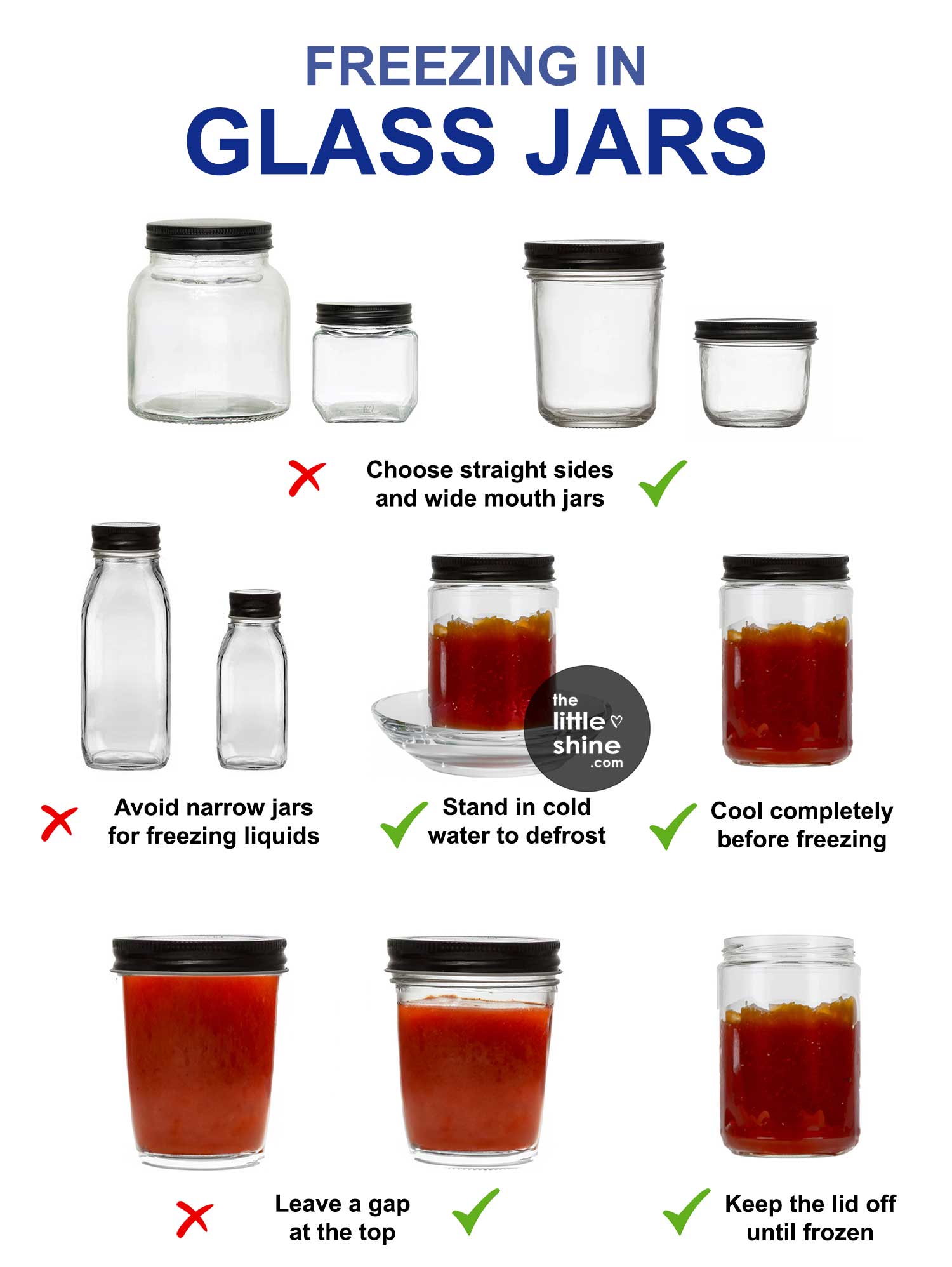Whenever you decide to freeze food or any items, I’m sure most of you tend to put the contents into glass jars. But did you know that there are certain important points you should always remember before freezing anything in glass jars?

From cooling food completely before freezing, to placing in cold water to defrost, to leaving gap at the top of the jar for the contents to expand, and more! Let’s discuss more about some tips and tricks for freezing in glass jars or containers.
Tips and Tricks for Freezing in Glass Jars or Containers
1. Choose the right jar to freeze your items
Always choose wide-necked or wide-mouthed jars or containers while freezing items. Those jars which taper outwards are better. Those with narrow openings aren’t suitable for freezing items. Wider mouthed jars will allow the contents to slip out right away when defrosted. Also, wider mouthed jars are easier to stack in the freezer.
2. Defrost the frozen item the right way
Do not plunge the frozen glass container in hot water or place it in a hot water bath. The jar will immediately crack.
You could either do the two-step method of bringing down the frozen jar into the refrigerator for 5 to 6 hours and then thaw it at room temperature until fully defrosted or you can bring it directly out and leave it at room temperature for a few hours and then place it in a cold water bath.
Once the contents loosen, transfer into another bowl and use as required.
3. Label the contents of the jar
Always label the jars once you’ve added the contents or make a note of the date of freezing on the jars, so that it will be easy for you to identify the same when you want to use/consume the item.
4. Cool the content completely before freezing
Freezing food while still hot can raise the temperature of the freezer itself and it could cause the other food items to start defrosting. Also, putting hot food in the freezer can cause moisture to be drawn onto the bottom side of the lid of the container.
It could also cause the formation of ice crystals in the food and change the texture of the food item.
5. Leave a gap at the top of the container
Do not fill in the contents/food item until the top of jar. Always leave some space, say a gap of around 3 to 4 centimeters from the top of the jar, whenever you store anything in the freezer, especially if you’re storing something liquid.
Liquids will expand whenfrozen and if you do not leave sufficient gap, it can cause the container to crack.
6. Use good quality glass jars for freezing
Not all glass containers are made to withstand thermal/heat stress. Thus, use glass containers that are made of tempered glass or borosilicate glass, when you freeze heated foods and liquids.
7. Let the contents freeze before screwing on the lid tightly
You can freeze your containers with plastic or metal lids, but let them sit loose until the contents are frozen. Do not fully seat. Always let the contents freeze completely and then screw on the lid tightly if need be.
8. Avoid using recyclable soda ash glass for freezing
Containers sold with preserves, pickles, sauces and jams at the supermarkets use recyclable soda ash glass. This type of glass is more prone to cracking when frozen. Thus, reusing these glass jars is not always recommended when you require to freeze items (but can be used for items stored in the refrigerator).
